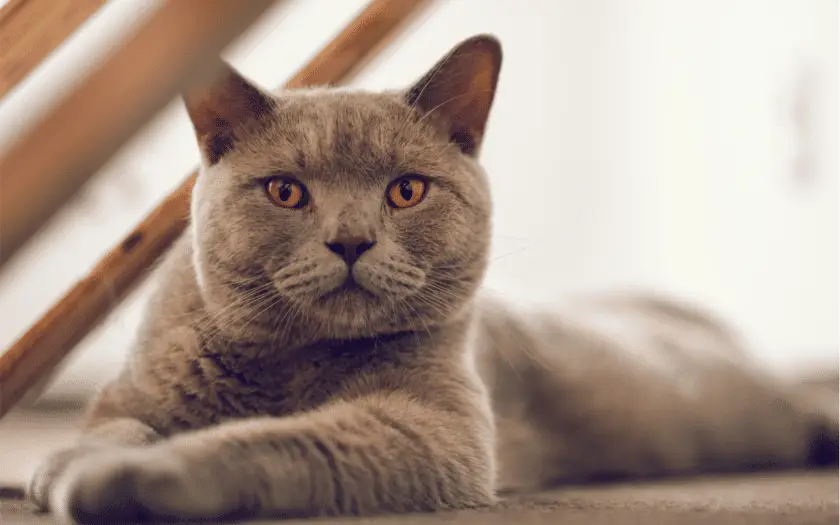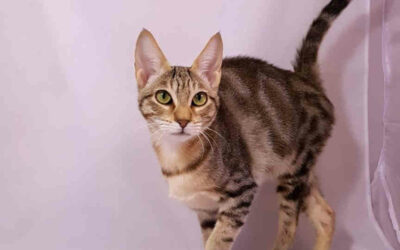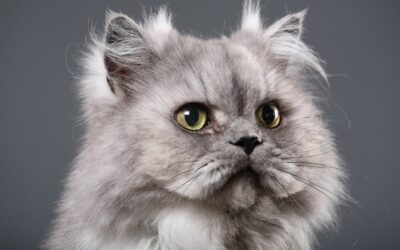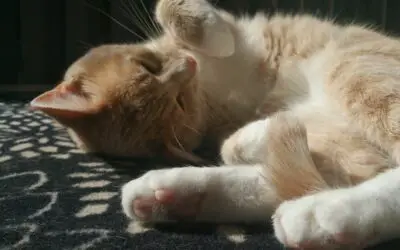As a breed that’s been in existence for hundreds of years and is one of the most popular pedigree breeds in the UK, it’s very likely that you’ve seen this beautiful cat before. The British Shorthair is an iconic cat that boasts easily distinguishable physical characteristics, which is a result of selective breeding during the nineteenth century.
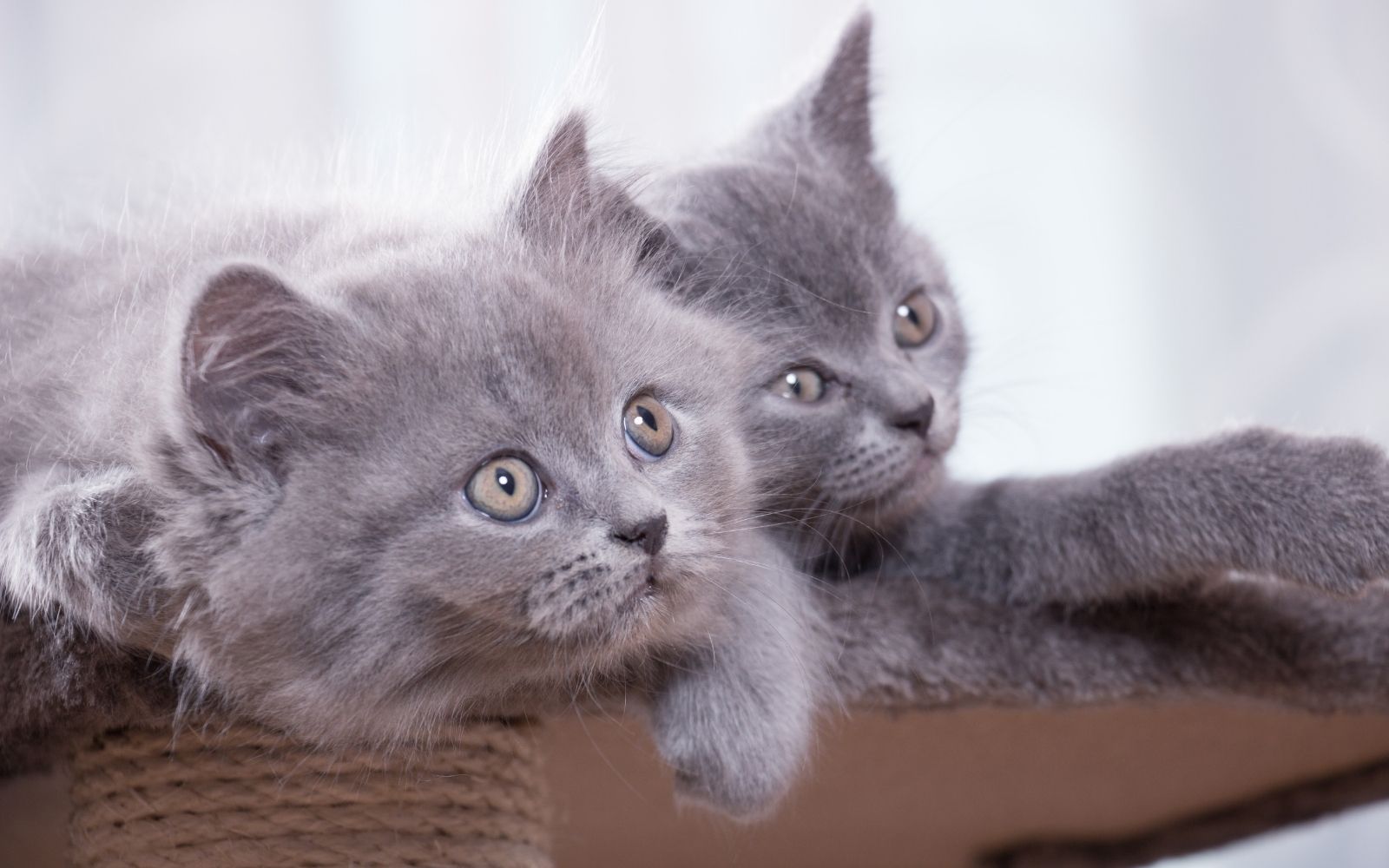
Their solid, rounded physique and muscular appearance are certainly reflected in their weight: the males can weigh up to 7kg! However, they tend to average at around 4 to 5 kg and are therefore considered to be a medium to large breed. All in all, there’s plenty of cat for you to enjoy!
The British Shorthair has unusual facial features as they have a short nose and chubby cheeks, which creates a smiling expression. This very smile is believed to be what inspired the character of the Cheshire cat in Alice In Wonderland.
Coat
Cheeky grins aside, these cats also boast a lavish coat that is short, dense and uniform in length. Originally, the breed was only available in blue and therefore known as the British Blue. However, the British Shorthair cat colors now come in a wide range including white, black, tabby, calico, cream, tortoiseshell, and bi-color with colors such as lilac and pointed among others that have emerged.
Eye-color
While at one point limited to one color, the eyes of the British Shorthair can now be found in gold, copper, blue and green. But the poster boy for the breed remains blue with striking copper eyes. How could you possibly resist the charm of such a regal-looking cat?
To match their irresistible, almost teddy bear-like appearance, the British Shorthair’s personality is generally very calm and affectionate. Contrary to a breed like the Abyssinian, they are not known to be the most active or playful breed of cat. But they certainly make up for their indifference to mischief with their easygoing nature.
Do not mistake their inactivity for stupidity, however! The Shorthair is an intelligent breed that requires plenty of mental stimulation. They will definitely appreciate having a few toys at their disposal, should they decide to goof around.
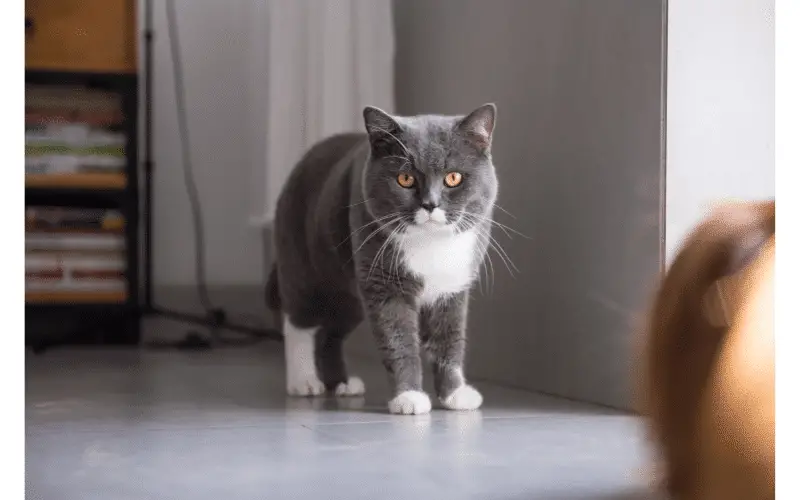
The patience and calm demeanor of these gentle souls make them some of the best cats to have around children and other pets. They will bond easily and be very tolerant of childish roughness without becoming aggressive. In fact, you’re advised to keep an eye on how your children behave around this cat, as it may have some trouble asserting its boundaries.
Proper introductions to other animals in the family are always important but in general, you are unlikely to encounter much resistance on their part.
The British Shorthair is not a low-maintenance cat, especially during spring. While the short coat is ideal for people with allergies since it doesn’t shed much, it is at the same time very dense and therefore requires a lot of combing.
Are you trying to find out if the British Shorthair is a match to your personality? Here’s a quick look at some intricacies of this breed:
Pros
These beautiful cats are gentle, patient, loyal, undemanding and non-destructive. This personality makes them an perfect choice for families with kids. If you’re the type to spend longer periods of time out of the house, you will find the Shorthair is not too clingy and will in fact appreciate some occasional alone time.
While appearance and personality are both important factors when deciding on a new feline friend, another important consideration is health. These guys are generally a very healthy breed with fewer genetic concerns than you might expect from other pedigree breeds. Of course, this doesn’t mean you should not take them for regular checkups and keep their vaccinations up to date.
Cons
- You may need to monitor how other family members interact with this cat. Other pets may try to dominate the Shorthair due to their easy-going personality.
- The dense coat requires a lot of maintenance.
- Highly active people might find this cat somewhat lazy, and their tendency towards gluttony is something you’ll need to monitor.
The Shorthair is a very fit breed. Be mindful of the following:
- Polycystic kidney disease (PKD) is a hereditary disease seen occasionally in British Shorthairs. Kittens with PKD are born with cysts inside the kidneys and the liver that grow bigger over time, eventually destroying these organs well into adulthood. Symptoms of PKD often present around seven years of age, and are similar to those seen in chronic kidney disease. There is currently no known cure, however, as is the case with CKD, certain diets and medications can slow the progression. A gene test is available, so if you adopt from a breeder, be sure to ask about it. We also recommend having your Shorthair frequently tested through urine and blood samples to increase the likelihood of early detection.
- This breed is suspected to have a genetic vulnerability that increases the chance of developing hypertrophic cardiomyopathy.
Sources:
https://ahcfargo.com/client-resources/breed-info/british-shorthair/
https://icatcare.org/advice/british-shorthair/
How much does a British Shorthair cost?
The price range is typically around $1000 to $2000 from a registered breeder, while unregistered breeders may charge a lot lower at $250 – $700. Should you decide to purchase your Shorthair from an unregistered breeder, we highly recommend you perform proper checks on the seller.
Are British Shorthairs hypoallergenic?
Unfortunately for those who have allergies, the answer is no. While they do have a short coat, it is dense and sheds a lot especially during the spring months. This means that the breed is likely unsuitable for people who suffer from severe allergic reactions to cats.

